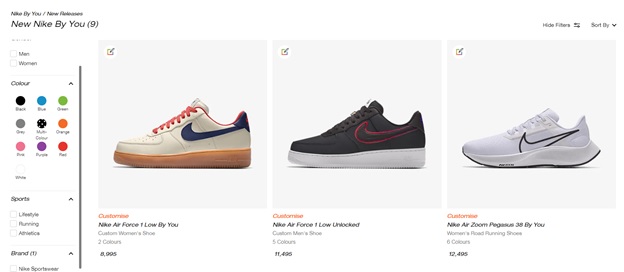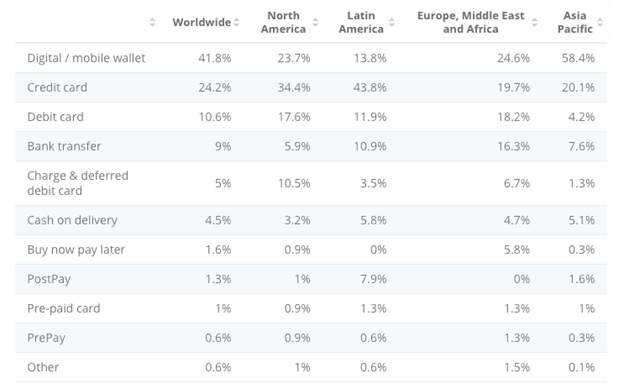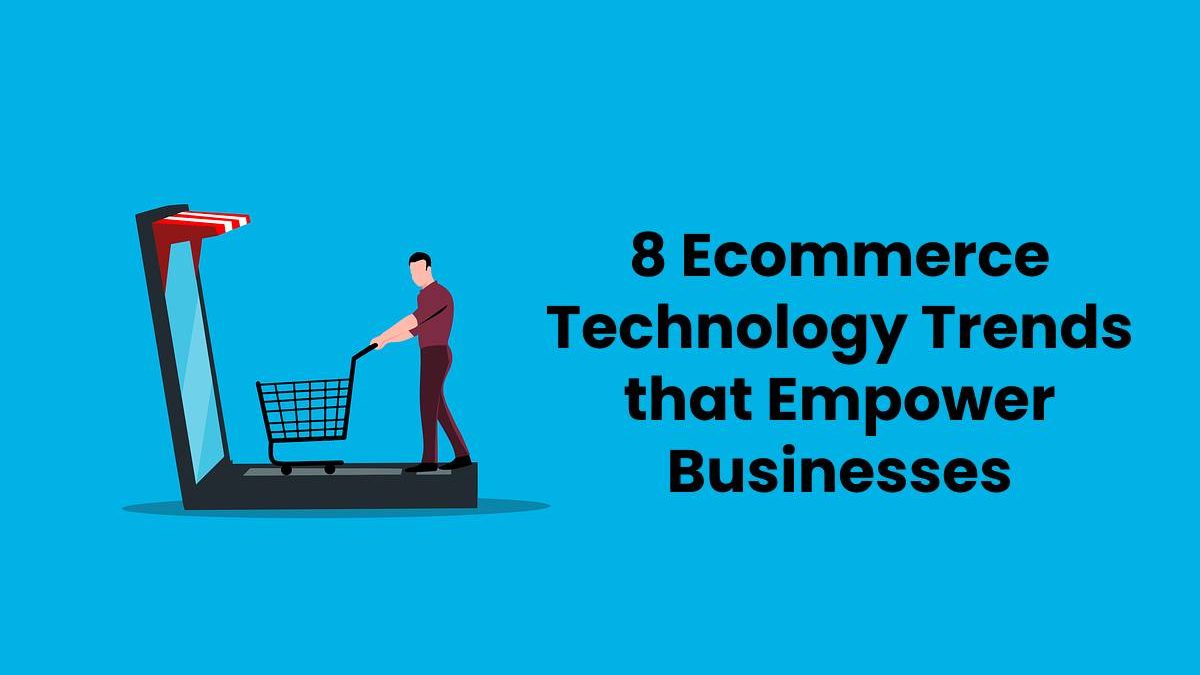Ecommerce Technology Trends that Empower Businesses
Consumer demands and market dynamics in a fragmented market frequently change pace. It is through agility only that a business can bring the resilience required to withstand the change. The eCommerce industry is one such industry where conformity to market trends is inevitably required. Any diversion from the same can lead to revenue loss and market dissociation.
For example, the eCommerce industry witnessed the emergence of the ‘Buy Now Pay Later’ in recent years. Instead of full fledged development, this payment method only required a minor plugin integration but the businesses who failed to do so lost the competitive edge.
In this blog, we are going to cover similar eCommerce technology trends but for the year 2021 and also shed light on their significance:
Table of Contents
Voice Search
Voice search is the second most popular method of search after mobile browser engines. The rapid growth in this technology trend was foreseen with the surge in sales of voice assistants and other voice enabled tech like car infotainment systems. For instance, it is understandable for consumers to use voice search for browsing in situations like driving, cooking, washing dishes, painting, etc.
To provide ease of use in all such situations, eCommerce businesses are required to adapt the voice search functionality on their platforms. Once done, they are suggested to target long tail keywords in website content to rank higher in SERPs (Search Engine Result Pages) for voice search.
Product Customization
In recent years, the need for product customization has drastically increased due to various reasons with the first and foremost being the emergence of supportive technology. Also, it is noted that customers prefer to customize expensive products when those are not able to fulfill the consumer demands on all fronts, for example, customization of bikes and cars.
Another reason behind the increase in demand for customizable products is comfort. Consumers have always preferred comfort and with product customization capabilities, they can add desired levels of comfort in their products.

For example, the renowned shoe maker Nike allowed customers to customize the color of the Nike sneakers under its ‘Nike by You’ program and as a result not only it received sales benefits but also gained wide media attention for its innovation. Another example of product customization in eCommerce are meal kit delivery websites that allow customers to select the ingredients in their meals
Lastly, the boom to product customization has been given by gift platforms that propose personalized gifts, such as personalized t-shirts, phone covers, pillows, water bottles, etc. to consumers.
ROPO
The next eCommerce technology trend in our list is ROPO (Research Online Purchase Online). Modern consumers are smart. They prefer to support their buying decisions with a lot of information. For this, they read online blogs, YouTube videos and even consult peers on Quora. However, businesses can assist them in making quick decisions by providing them all information on one page.
Brick and mortar stores with eCommerce platforms can target their consumers better by uploading complete info of products on their dedicated product pages. They can use downloadable material like style guides, size charts, brochures, product manuals to provide visitors with appropriate levels of information.
Product reviews and ratings on eCommerce websites can have sorting and search features to help customers find the exact required information.
AI Chatbots
There are two strong statistics that prove the need of AI powered chatbots in customer service. According to Microsoft, 90% of Americans consider customer service as a deciding factor to do business with a brand. Secondly, Salesforce’s research also proves that 89% of customers are likely to make another purchase after a positive customer service experience.
Now to help eCommerce businesses improve their customer service, not only AI chatbots are efficient at serving the purpose but they can also help you topple your customer service expenses.
- First, AI chatbots can hold more data and reply instantly when compared to actual customer care executives. For this reason, customers try to resolve their queries from a chatbot before reaching out to a customer service official.
- Be it custom development or API integration, adding chatbot to your online store is a one time cost. On the other hand, salaries are paid regularly and deplete your profit.
- AI chatbots work 24/7, whereas providing manual support 24/7 hours will cost more. Thus, AI chatbots can ensure that your customers get the minimum level of customer support 24/7.
- Selecting talents for customer service is time consuming. While, selecting a chatbot will also consume time but you will only need to invest that time just once.
B2B Growth
In the starting decade of the 21st century, we all witnessed the emergence and growth of a strong B2C eCommerce sector. However, in the past few years, the B2B sector in the eCommerce industry also started to do well.
With the emergence of readymade business solutions, it became easier for B2B businesses to connect with their target customers over the internet. Each and every business faces challenges, which we call a use case. Earlier, the eCommerce software technology was not so advanced. Businesses had to opt for custom eCommerce development to resolve the problems in various B2B use cases but now, there are tech solutions available.

For example: UniDiamonds is an online platform that is also the world’s first B2B diamond trading marketplace. It is built on the Yo!Kart eCommerce solution and allows vendors to buy, sell, compare and place bids on polished diamonds. To increase support for B2B diamond trading operations, the solution was refined with features like AI price calculator, auction module and broker module with price adjustment function.
Similarly, there are various eCommerce solutions capable of handling B2B operations, inspiring owners to automate their B2B ventures.
Image Search
Image search is one of the fastest growing eCommerce technology trends bringing convenience to users. Typically, searching for a product on an eCommerce store can take time, but image search allows for reverse search operations.
For example, if a customer wants to restock an item that is no longer available at the original source, he or she can simply click the picture and search it on the internet. This saves a lot of time and also assists in quick price comparison over multiple stores.
Below are some examples of enterprise to small scale eCommerce businesses who use image search to increase sales revenue.
Amazon

The StyleSnap feature on Alexa and Amazon app allows customers to find styles easily via image search.
Syte

Syte is an eCommerce fashion store in Israel that also uses image search to provide a smooth and satisfying shopping experience to customers.
Pinterest Lens

Although Pinterest isn’t an eCommerce store it still allows vendors to upload shoppable pins through which customers can directly make a purchase. Through Pinterest Lens, they can directly find a product via image search.
Mobile Optimization
According to Statista, global mCommerce sales have grown by 14% in the past 4 years. In 2021, they account for 72.9% of all eCommerce sales. Thus it has become necessary now to optimize shopping experience for mobile devices on eCommerce stores.
To fulfill this purpose, eCommerce businesses have two options, which are to either optimize their desktop websites for mobile screens or go for mobile app development.
eCommerce mobile apps receive a positive response from the public. They assist eCommerce brands in branding and establishing a loyal customer base. In a study, it was also found that 67% of consumers download a retailer’s app.
On the other hand, you can also optimize a desktop website for mobile devices, but it won’t be as efficient as a mobile app, which is dedicatedly developed to support mobile browsing operations.
Digital Payments
With the maximum trust on eCommerce brands ever recorded in history, consumers are more willing to complete transactions online in 2021. This is mainly because of two reasons:
- Convenience in paying online payment
- Several discount offers and other benefits issued by bank on their credit cards and debit cards
To compare digital payment methods with the traditional cash on delivery method, the former ones have successfully outperformed the latter by huge margins. Below is eCommerce Guide’s research data on the most used payment methods with digital and mobile wallet payments topping the list. This shows the change in consumer behaviour towards online payment all over the world.

Frequently Asked Questions
Q: What are eCommerce Technologies?
eCommerce technologies refers to any software or hardware tech that enables electronic commerce operations like online product browsing, transaction processing, help/support and eCommerce. These technologies change from time to time and are not limited to a few handful options.
Q: Is eCommerce growing?
The eCommerce industry is crossing boundaries everywhere. Be it geographical expansion, industrial expansion, innovation or rise of new business models. Similarly, the number of eCommerce customers is also surging rapidly. According to Statista, the global eCommerce industry has grown over 3500 billion US dollars in the past eight years (still counting) and is expected to grow by another $1500 billion in the next three years.
Q: What are the future trends of eCommerce?
mCommerce will continue to grow as the future of eCommerce, which will require technologies like voice search and AI to continue as trends. Similarly, due to the presence of so many eCommerce channels, businesses will require to follow an omni channel growth approach. In the near future, subscription-based business modules, drone delivery and high levels of personalization are also expected to grow.
Conclusion
The above-mentioned trends will resonate in the future plans of diverse eCommerce businesses. Those that stay inexpressive towards these trends and fail to adapt to them may suffer losses in terms of sales, customer satisfaction and brand reputation. However, the entrepreneurs who are yet to start their eCommerce platforms can plan ahead and stay agile by developing on all fronts that the modern eCommerce situation demands. Also, remember that as the trends keep changing, the change remains the only constant in the industry with agile development methodology being the sole option to stay relevant to the market at all times.
Author Bio – Umang Chugh

Umang is an experienced SEO Consultant from the past 5 years. He is enthusiastic about the SEO industry and is constantly eager to learn about the current search engine trends. Umang uses his abilities and experience to assist businesses in connecting with their target market. His area of expertise is SEO, Branding and Developing marketing strategies for companies in a variety of industries. For the past five years, he has worked in the field of SEO, email outreach and ORM.

